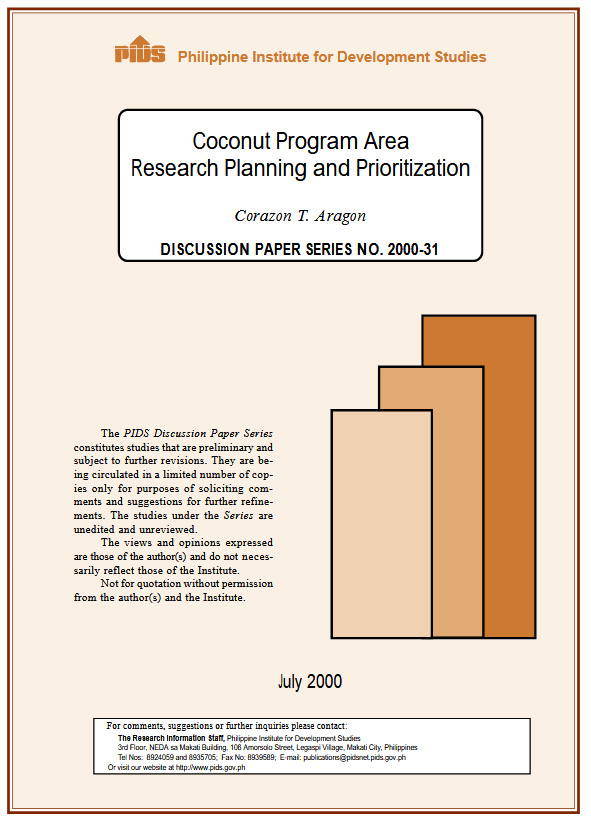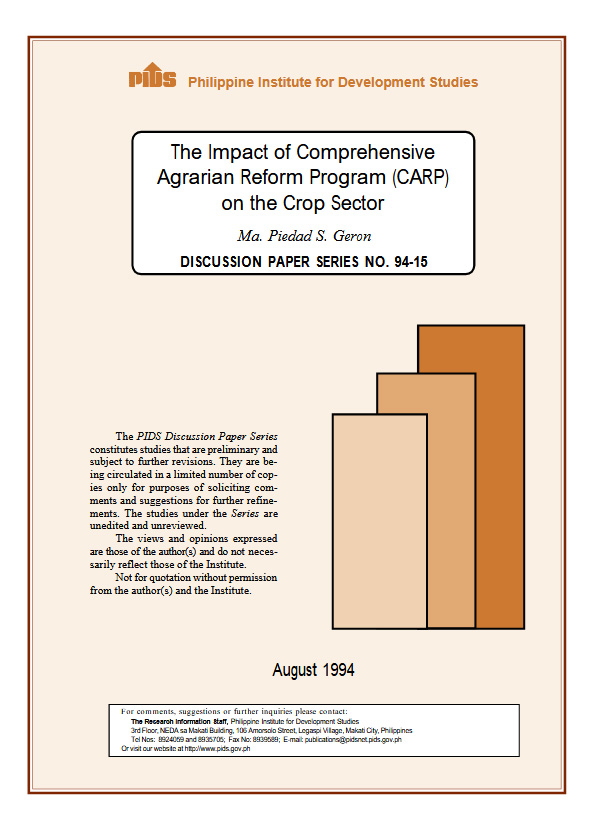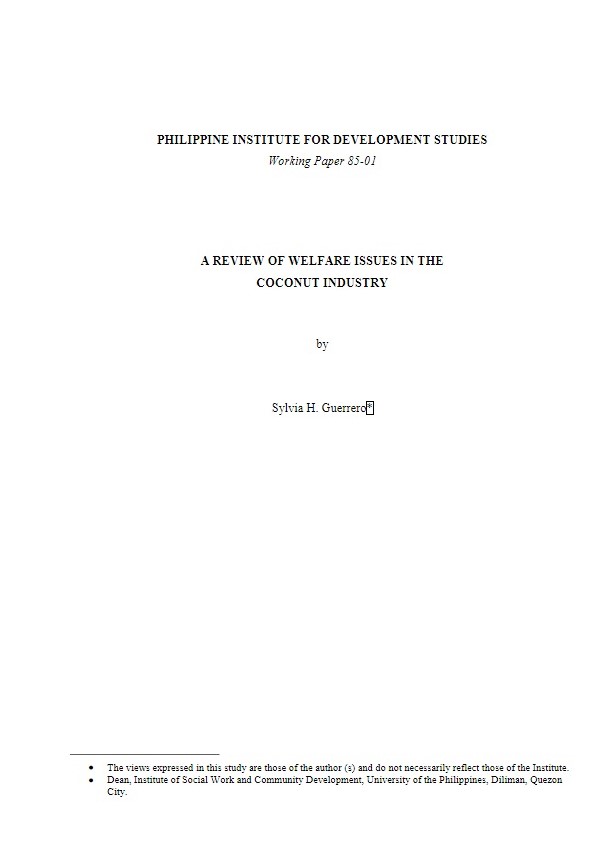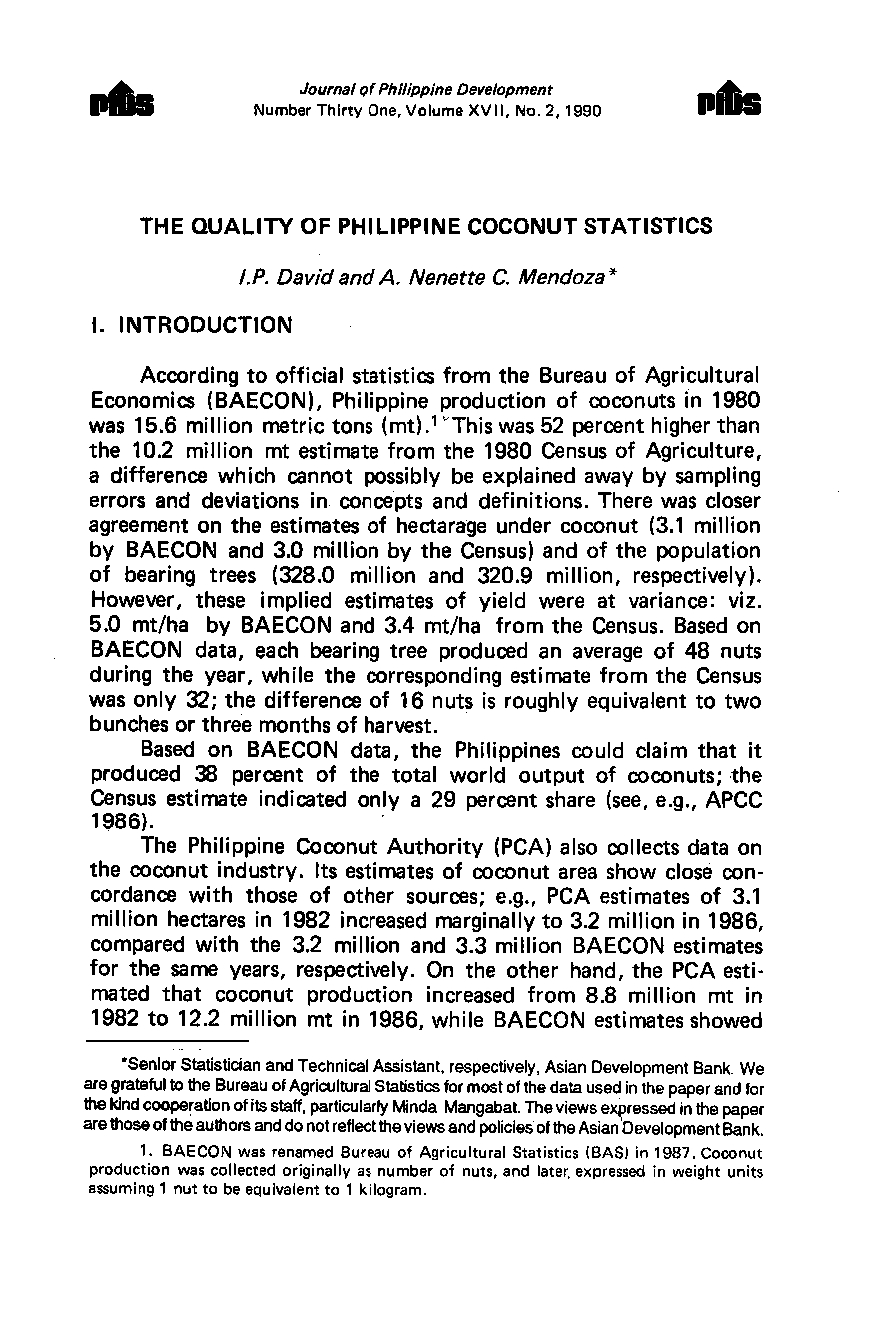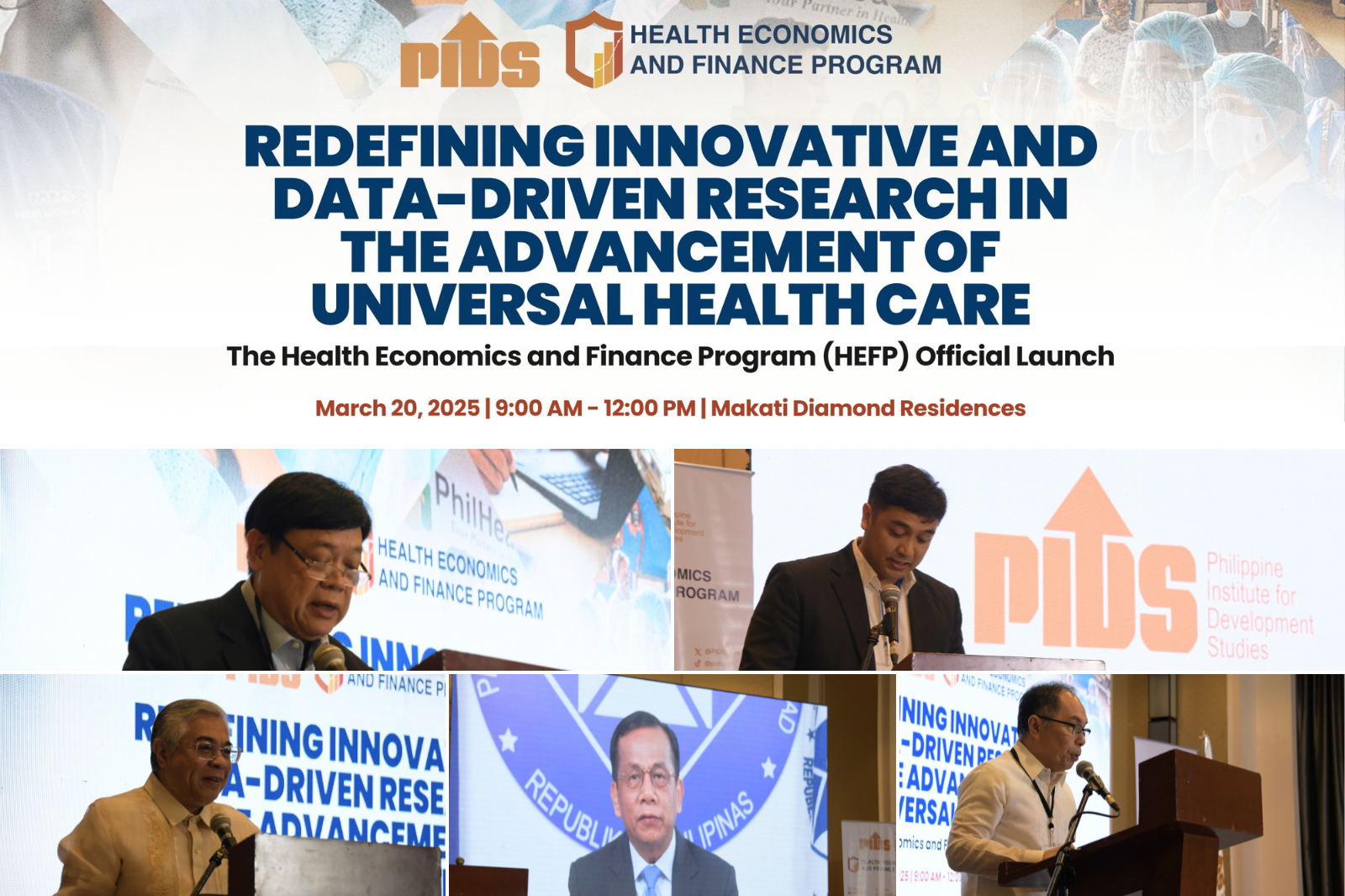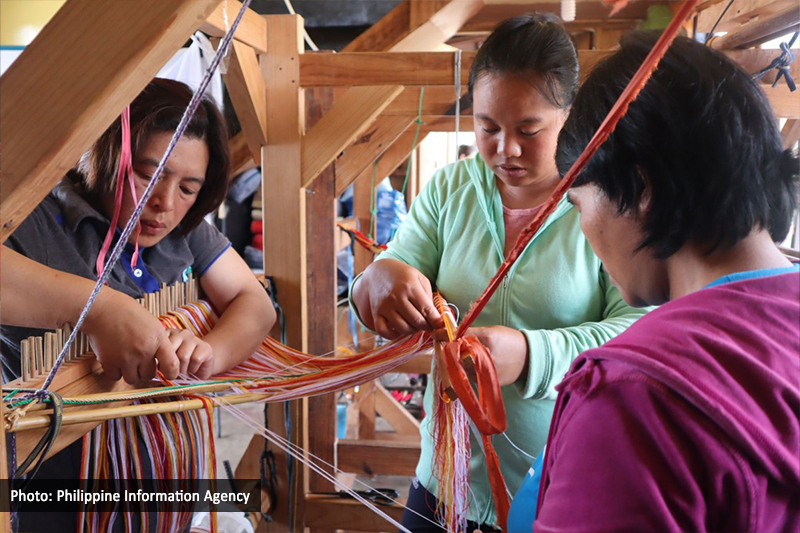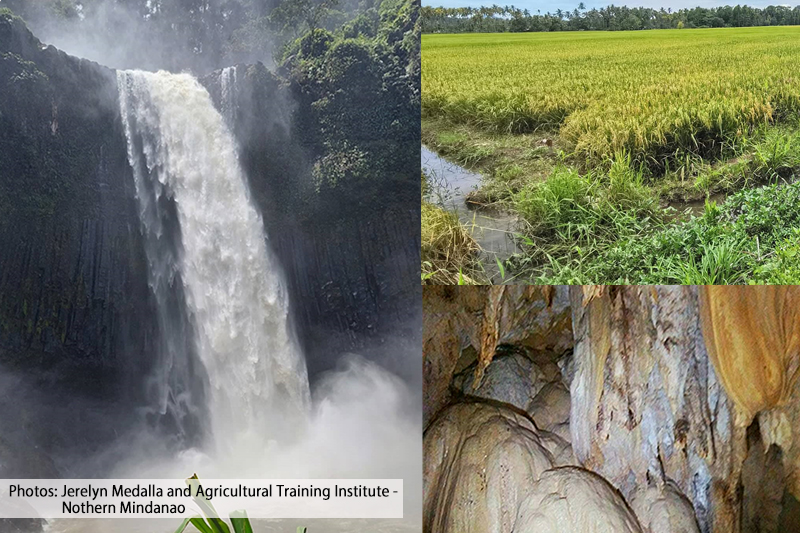The coconut industry is one of the country's major pillars in employment generation and foreign exchange earnings. However, local production problems, the expansion in coconut hectarage of neighboring countries, and recent developments in biotechnology research on other competing crops that have high lauric oil content might affect its long-term sustainability and viability. In a highly liberalized global trade environment, innovation and creativity in the country's coconut industry are needed for survival (Boceta, 1997). In order for the Philippines to be globally competitive, the country must exert all efforts to increase coconut productivity, lower the cost of processing copra, coconut oil, dessicated coconut, and other coconut products, improve the quality of copra and coconut oil, and develop downstream high-value coconut products through technological developments. Indonesia has already dislodged the Philippines as the world's largest producer of coconut. Recently, the increasing share of Indonesia in the world market is also threatening the Philippines’ position as the top exporter of coconut oil in the world. Unless the weaknesses and threats in the Philippine coconut industry are faced, the country's share in the world market for coconut oil will continue to diminish. This paper, therefore, aims to present an industry profile with focus on domestic production, consumption, external trade, problems/constraints, and market potentials; review past researches on coconut, technologies generated, and the extent of participation of the private and public sectors; identify research and technology gaps for the coconut industry; identify strengths and weaknesses in the institutional structure of research and extension interface, as well as research complementation efforts; and suggest recommendations and R&D agenda for the coconut industry
Citations
This publication has been cited 1 time
- Rodriguez, Divina Gracia P., Roderick M. Rejesus, and Corazono T. Aragon. 2007. Impacts of an agricultural development program for poor coconut producers in the Philippines: An approach using panel data and propensity score matching techniques. Journal of Agricultural and Resource Economics, 32, no. 3, 1-24. Western Agricultural Economics Association.

